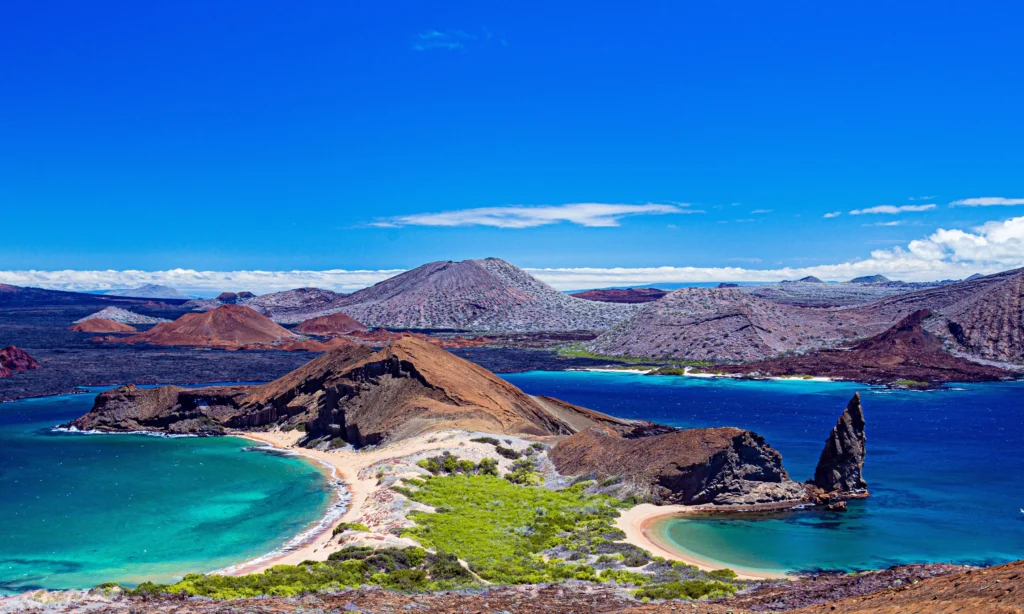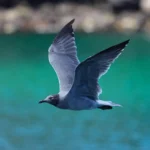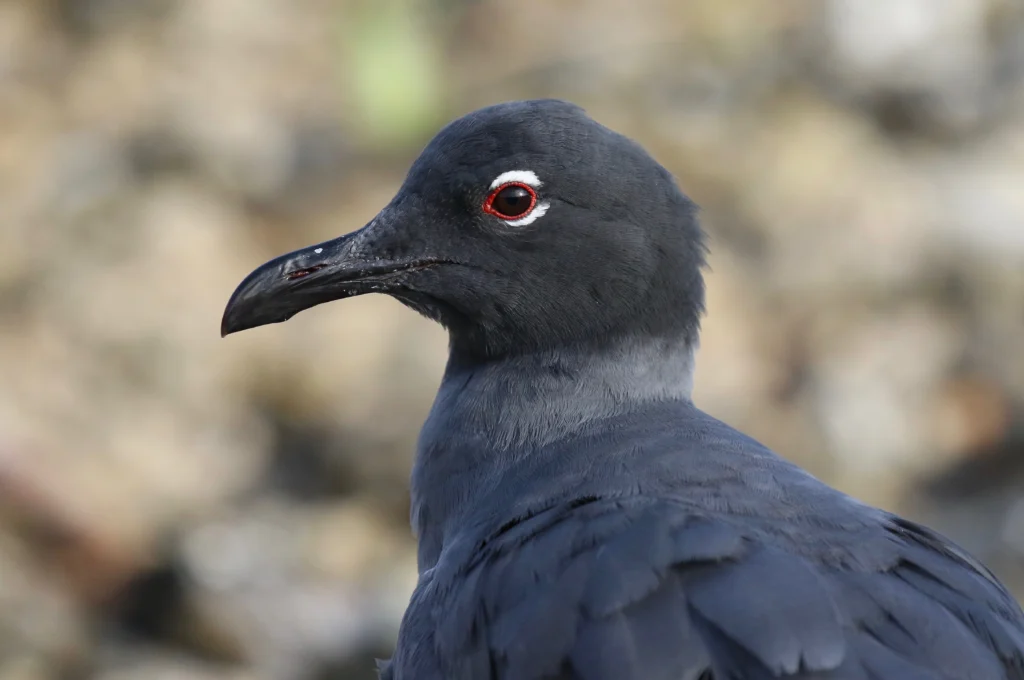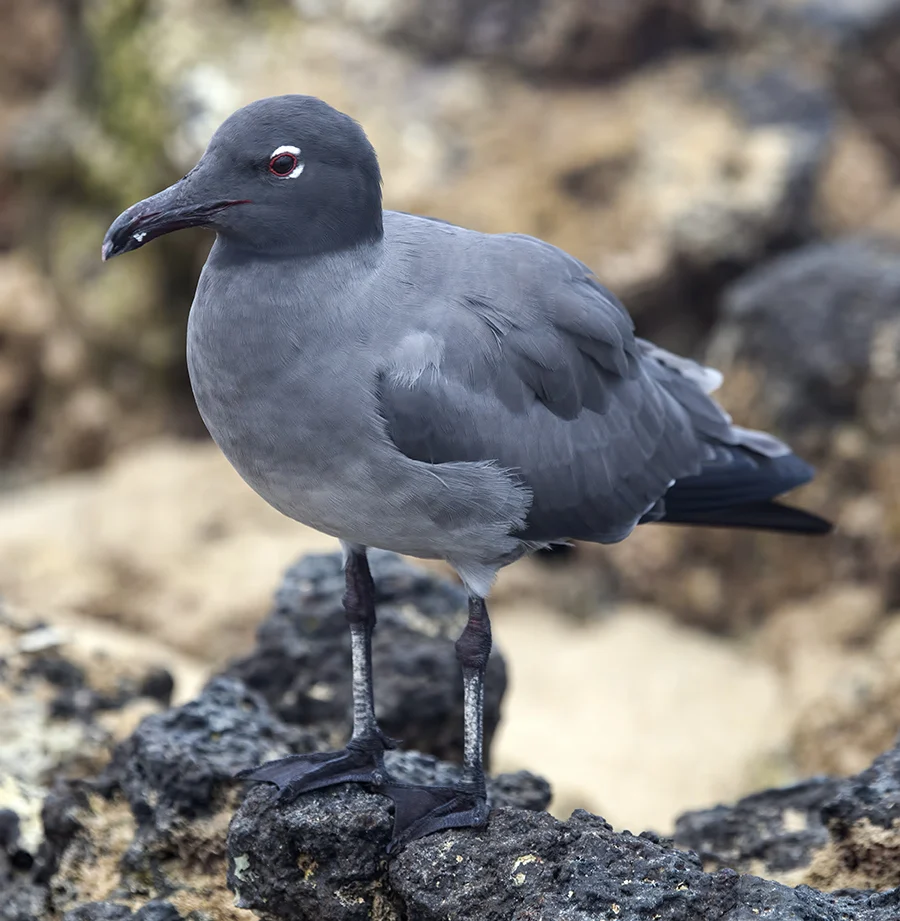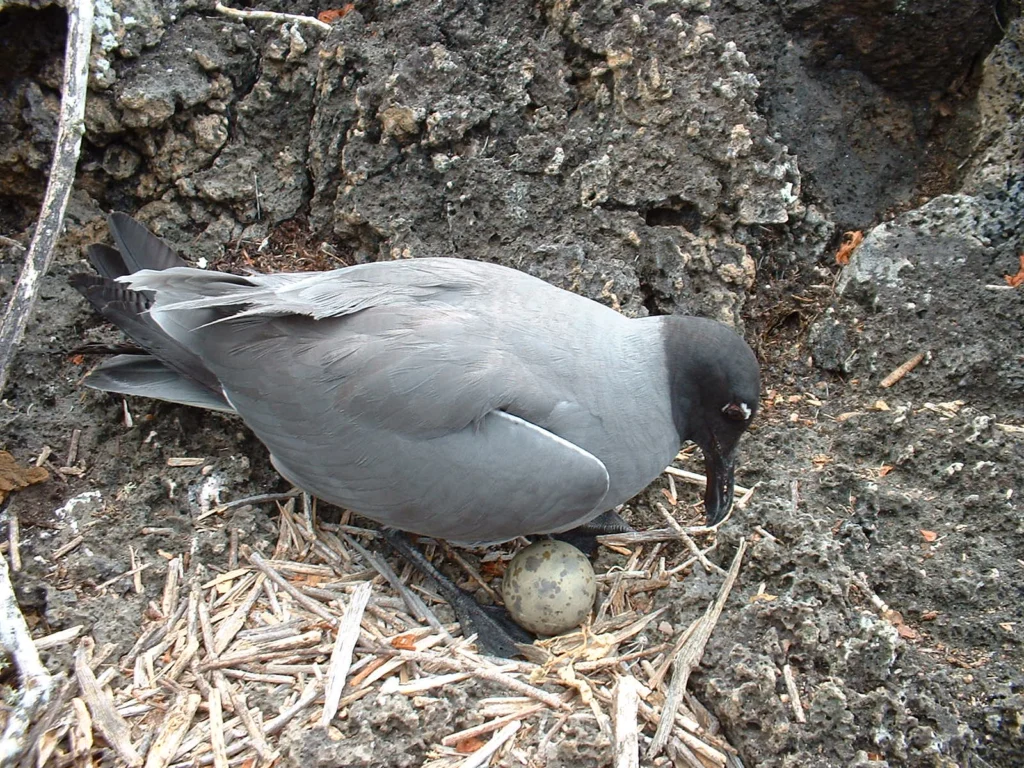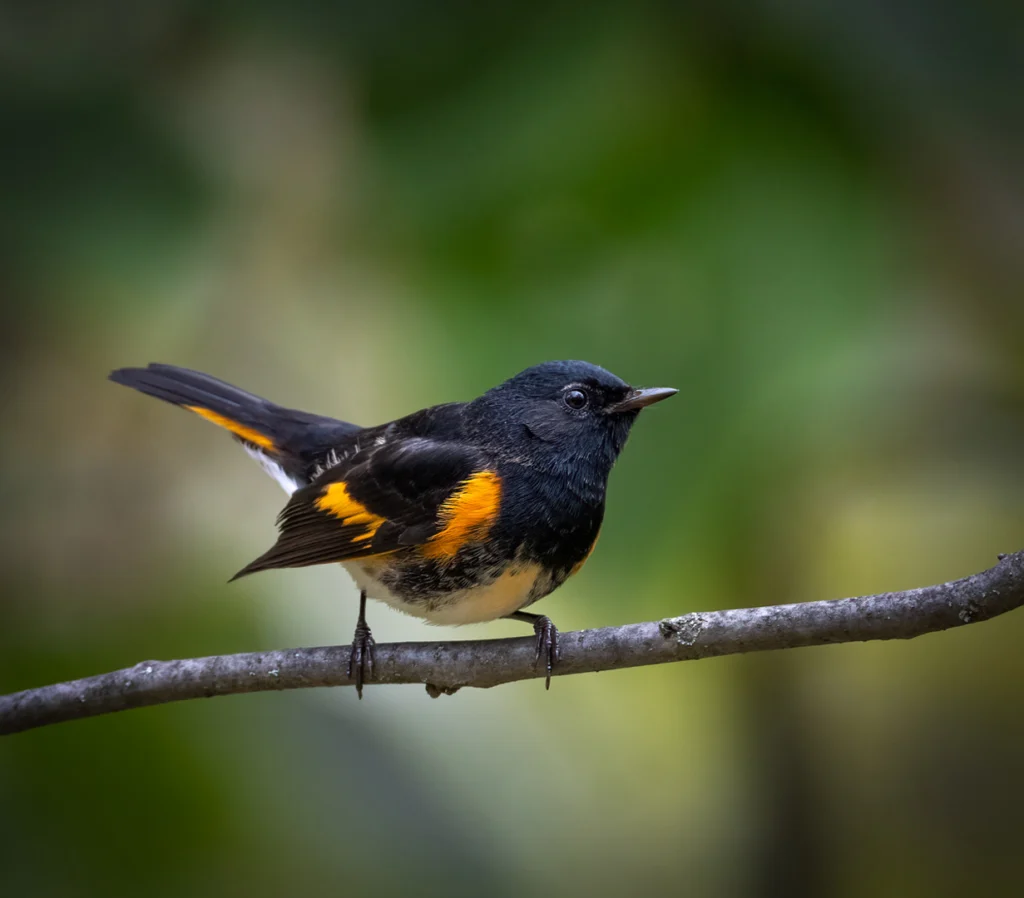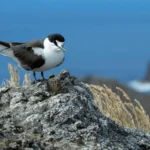
Overview
About
Although gulls are widely regarded as super-abundant (sometimes even characterized as pests), the handsome Lava Gull is a rare exception and is a sought-after sighting among avid birders.
The use of “lava” in this bird’s common name refers to the dark basalt lava rocks of its favored coastline habitats. This dark-plumaged “dusky gull” (a former nickname) can only be found in the Galápagos Islands. The Lava Gull is closely related to the Laughing Gull, a species common along beaches throughout the Americas. The Lava Gull, like the Laughing Gull and other “hooded gulls,” sports crisp plumage on its head in the breeding season. But the Lava Gull retains its “hood” year-round.
The Lava Gull is exceptional for another reason: It is the rarest gull in the world. Numbering no more than 800 individuals, its population is thought to be stable and was likely never very large given its limited distribution, but Lava Gulls are still vulnerable to threats
Threats
Birds around the world are declining, and many of them, from endemic, scarce species such as the Lava Gull to familiar backyard birds, face urgent, acute threats. All birds are made more vulnerable by the cumulative impacts of threats like habitat loss and invasive species.
Fisheries
Lava Gulls are primarily threatened by fishing activities, especially being caught on hooks as bycatch. They also suffer from human overfishing and overharvesting of other aquatic resources.
Cats & Invasive Species
Invasive non-native species, particularly cats, rats, and dogs, plunder Lava Gull nests. Introduced diseases, such as Newcastle disease, brought into the Galápagos with domestic chickens, pose a particularly high risk to Lava Gull populations.
Plastics Pollution
Lava Gulls, along with other seabirds, are threatened by marine plastic pollution. Birds can swallow plastic trash, with fatal results, or become trapped or strangled by plastic materials.
Climate Change
The greatest densities of Lava Gulls occur within the three main ports of the Galápagos Islands, which lie in unprotected urban areas. These ports are also vulnerable to the rising waters, changing ocean currents, and more extreme weather events happening due to climate change.
Conservation Strategies & Projects
Birds need our help to overcome the threats they face. At ABC, we’re inspired by the wonder of birds like the Lava Gull. We’re driven by our responsibility to find solutions to meet their greatest challenges. With science as our foundation, and with inclusion and partnership at the heart of all we do, we take bold action for birds across the Americas.
Address Ocean/Island Issues
ABC’s Giovanny Suárez Espín and our partner Fundación Jocotoco are collaborating to create more positive seabird/fishery interactions around the Galápagos, including GPS tracking and direct community outreach. Giovanny developed the NISURI system, a safer fishing method that reduces harm to seabirds.
ABC has also worked with partners on the reintroduction of the Galápagos Petrel on private lands, including the first use of an artificial burrow for the species.
Control Invasive Species
ABC works with partners such as Island Conservation (IC) in the Galápagos Islands to control harmful invasive species. IC is now working to control introduced cats and rodents on Floreana Island and has eradicated goats, donkeys, and pigs on the larger islands.
Address Climate Change
ABC and partners are working in three key areas — mitigation, resilience, and adaptation — to combat the effects of climate change and build a sustainable, long-term future for all birds, including range-restricted species such as the Lava Gull.
Bird Gallery
A handsome bird, the adult Lava Gull has a dark brown to blackish head offset by white arcs above and below each dark eye. Its body and wings are a dark charcoal gray, shading to paler gray on the belly, with whitish uppertail and undertail feathers. Its bill and feet are black. A bright red orbital (eye) ring and mouth lining (called a gape) provide this bird’s only touches of color. Male Lava Gulls are slightly larger than females. Juvenile Lava Gulls are sooty brown, not reaching full adult plumage until their third year.
At rest, a Lava Gull shows a line of white feathers at the edge of its folded wing, which contrasts with its dark body plumage. This white line may serve as a visual cue during social interactions, as camouflage, and as a guide for young chicks.
Unlike other “hooded” gull species, such as the Laughing and Franklin’s Gulls, which molt their head plumage at different times of the year, the Lava Gull wears its hood year-round.
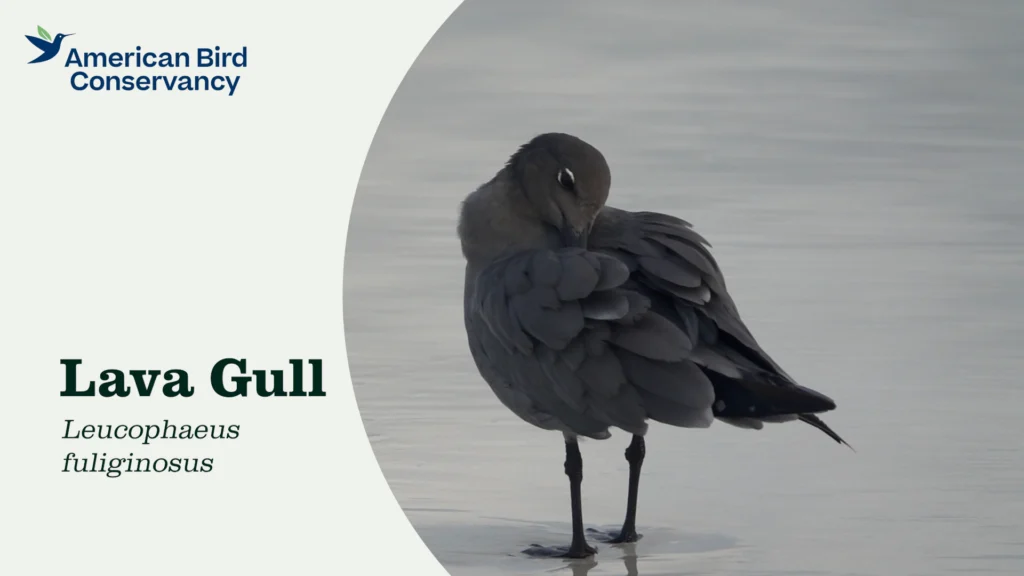
Sounds
The Lava Gull gives long, raucous, laughter-like calls, often with body and head held horizontally and the bill wide open. Its calls include harsh croaking and cackling notes.
Credit: Eric DeFonso, XC105773. Accessible at www.xeno-canto.org/105773.
Credit: Oscar Campbell, XC332878. Accessible at www.xeno-canto.org/332878.
Habitat
The Lava Gull spends most of its life along the sandy and rocky shorelines of the Galápagos Islands. Its dark plumage provides excellent camouflage against the volcanic rock of these shores.
- Found on rocky, gravelly, and sandy shorelines, in bays and lagoons, and often near colonies of other seabird species
- Uses human-made harbors and shoreline developments

Range & Region
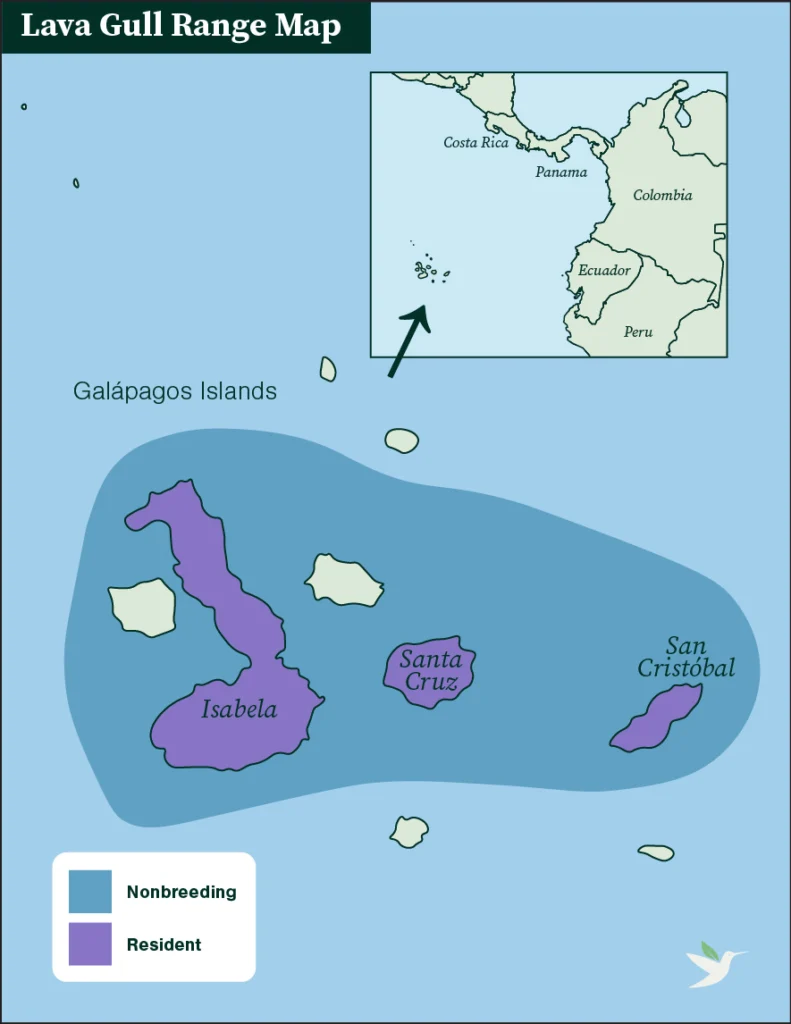
Specific Area
Galápagos Islands, Ecuador
Range Detail
The Lava Gull is widespread (although not in large numbers) along the coastlines of Santa Cruz, San Cristóbal, Genovesa, and Isabela Islands in the Galápagos archipelago.
Did you know?
Although it’s an adept flyer, the Lava Gull sticks close to shore, rarely even moving between the small islands of the Galápagos archipelago. It is endemic to that island chain, occurring nowhere else.
Life History
Unlike other gulls and terns, the Lava Gull is a solitary nester. Each pair maintains a large nesting territory, often over 21,000 square feet, which they aggressively defend against intruders. Groups of Lava Gulls scavenge in areas of high food availability, such as harbors, and will follow boats for scraps. They prefer to perch on rocks, boats, and piers as they scan for food items. Lava Gulls rarely land on the ocean, usually hovering over the water’s surface to snatch up floating food scraps.
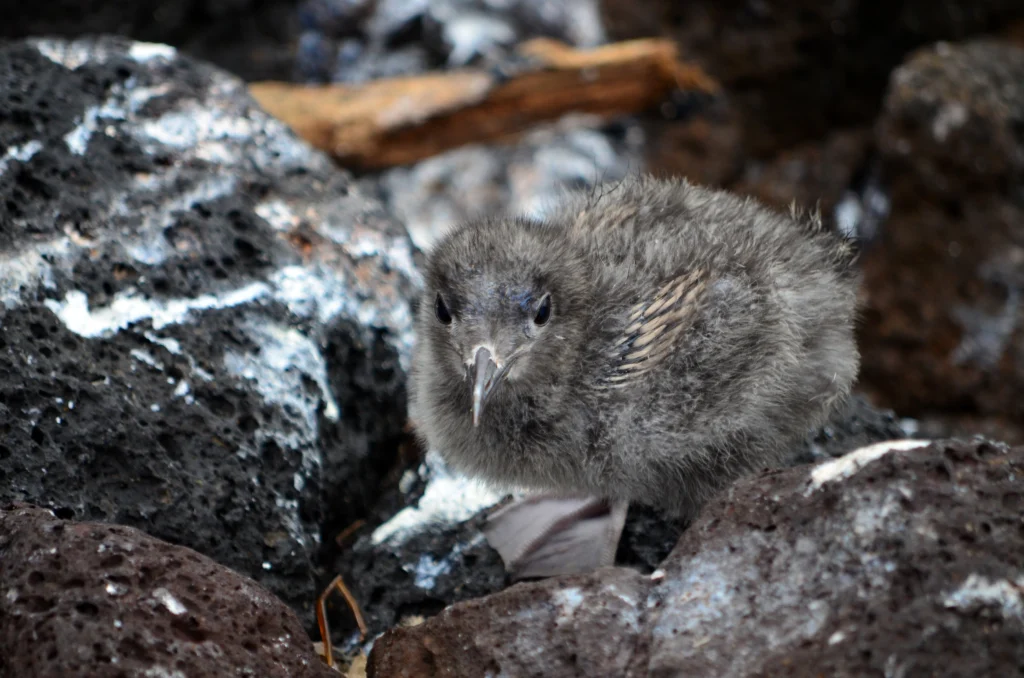
Diet
The Lava Gull feeds on seabird eggs, juvenile marine iguanas, small fish, and crustaceans such as crabs. It often associates with sea lions, eating the mammals’ leftover fish fragments and placentae. Lava Gulls may also steal food from Magnificent Frigatebirds and Lava Herons.
Courtship
Lava Gulls form monogamous pairs that may last for multiple breeding seasons.
As in many other gull species, a male Lava Gull’s courtship displays include downward head-bobbing movements accompanied by loud calls.
Nesting
A solitary rather than colonial nester, a Lava Gull pair chooses a nest site near the ocean above the high-tide mark, near a shrub or atop a low outcropping. The pair then builds their nest, a simple scrape in the sand or gravel lined with vegetation.
Eggs & Young
The female Lava Gull lays two heavily marked olive eggs, which blend seamlessly into the nest scrape. Both parents take turns incubating the eggs for around one month. The newly hatched chicks are mottled with gray, beige, and black down, perfectly camouflaged to match their surroundings. Both parents feed the young, which fledge about two months after hatching, and remain dependent upon their parents for several more weeks after leaving the nest.
